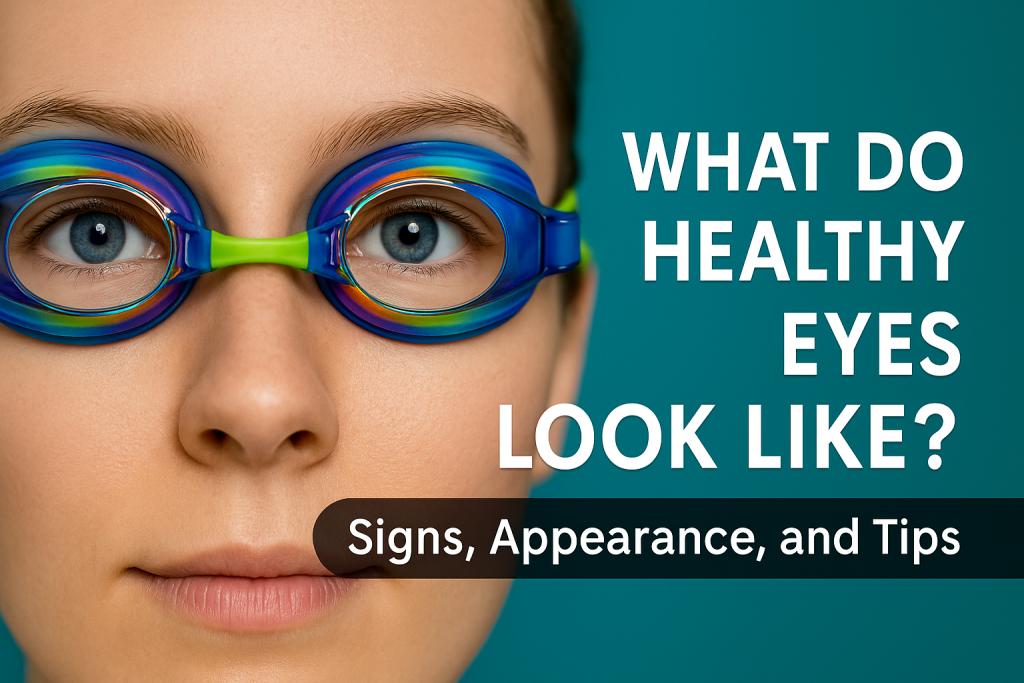Our eyes reveal a lot about our overall health and well-being. Healthy eyes are not only essential for good vision but also act as indicators of our general health. Recognizing the appearance and signs of healthy eyes enables us to take action early if issues arise. So, what do healthy eyes look like? This comprehensive guide explores the features of healthy eyes, signs of problems, and practical tips to maintain your eye health.
Understanding Eye Health: Why It Matters
Eye health is often overlooked until a problem occurs. However, early detection of changes in eye appearance can prevent vision loss and detect underlying health conditions. Many systemic diseases such as diabetes, high blood pressure, and infections can manifest symptoms in the eyes. Learning what healthy eyes look like empowers you to watch for warning signs and maintain optimal vision throughout your life.
What Do Healthy Eyes Look Like? Key Signs and Features
1. Clear and Bright Whites (Sclera)
The sclera is the white part of your eye. In healthy eyes, the sclera is clear, bright white, and free from discoloration. A slight pinkish hue is normal due to underlying blood vessels, but yellowing, redness, or brown spots can indicate illness, irritation, or infection.
- Normal: Bright white, smooth texture, minimal visible blood vessels.
- Abnormal: Yellowing (jaundice), persistent redness, visible growths, or dark spots.
2. Healthy, Pink Inner Eyelids
The inner lining of your eyelids (conjunctiva) should appear pale pink and moist. This suggests good blood flow and adequate lubrication.
- Normal: Light pink color, not swollen, not dry or flaky.
- Abnormal: Pale (could indicate anemia), red and puffy (infection or allergies), yellowish (jaundice).
3. Clear and Moist Cornea
The cornea is the transparent dome covering the iris and pupil. A healthy cornea is crystal clear, smooth, and moist, allowing light to enter the eye efficiently.
- Normal: Transparent, shiny, and well-lubricated.
- Abnormal: Cloudiness, dryness, swelling, or visible spots.
4. Evenly Colored, Bright Irises
The iris is the colored part of your eye. In healthy eyes, the iris has a uniform color pattern and no dark or light spots (unless naturally present).
- Normal: Evenly pigmented, no sudden color changes or spots.
- Abnormal: New spots, specks, or dramatic color changes can indicate inflammation or disease.
5. Round, Reactive Pupils
The pupil is the black center of your eye. Healthy pupils are round, equal in size, and respond to changes in light (constrict in bright, dilate in dim).
- Normal: Symmetrical, round, and reactive to light.
- Abnormal: Unequal sizes (anisocoria), odd shapes, sluggish or no reaction to light.
6. No Unusual Discharge or Tears
Healthy eyes are moist but not watery, sticky, or crusty. Occasional tears are normal, but persistent watering, pus, or crusting may indicate infection or allergies.
7. Absence of Redness or Visible Blood Vessels
While minor redness from tiredness is common, chronically red eyes or prominent blood vessels can signal irritation, allergies, or more serious conditions like conjunctivitis.
Signs of Eye Health Problems
Knowing what healthy eyes look like helps you spot problems early. Common warning signs include:
- Yellowing of the sclera (may signal liver problems)
- Persistent redness or bloodshot appearance
- Cloudy or hazy cornea
- Dark spots, floaters, or flashes in vision
- Swelling or pain in or around the eyes
- Unusual discharge, pus, or crusting
- Sudden changes in pupil size or shape
- Vision changes, double vision, or loss of vision
If you notice any of these symptoms, seek an eye care professional’s advice promptly.
How to Maintain Healthy Eyes
Maintaining eye health is essential for lifelong clear vision. Here are some practical tips to keep your eyes in top condition:
Eat a Nutrient-Rich Diet
Foods rich in vitamins A, C, E, zinc, and omega-3 fatty acids support eye health. Incorporate leafy greens, carrots, fish, nuts, and citrus fruits in your diet.
Practice Good Eye Hygiene
- Wash your hands before touching your eyes or handling contact lenses.
- Remove makeup before sleep.
- Avoid rubbing your eyes.
Protect Your Eyes from UV Light
Wear sunglasses that block 99-100% of UVA and UVB rays to reduce the risk of cataracts and other eye damage.
Take Breaks from Screens
Follow the 20-20-20 rule: Every 20 minutes, look at something 20 feet away for 20 seconds to reduce eye strain.
Stay Hydrated
Proper hydration keeps your eyes moist and comfortable.
Regular Eye Exams
Visit your eye doctor regularly for comprehensive eye exams, even if you have no symptoms. Early detection of conditions like glaucoma, cataracts, and macular degeneration is vital.
Frequently Asked Questions About Healthy Eyes
Can healthy eyes have visible veins?
Mild, fine blood vessels are normal, especially if you are tired or exposed to irritants. However, prominent or persistently red veins can indicate dryness, irritation, or underlying health issues.
Is it normal for the sclera to not be pure white?
Yes, a slight pinkness or subtle bluish tint can be normal, especially in children and seniors. However, yellowing or brown patches require medical evaluation.
Are eye floaters a sign of unhealthy eyes?
Occasional floaters are common, especially with age. However, a sudden increase in floaters, flashes of light, or loss of side vision should be evaluated by an eye specialist.
Conclusion: Spotting and Maintaining Healthy Eyes
Healthy eyes are clear, bright, evenly colored, and free of unusual redness, discharge, or discomfort. Monitoring your eyes’ appearance helps you catch potential issues early and maintain good vision for life. Remember, regular eye exams and a healthy lifestyle are your best tools for eye health.
If you ever notice changes in your eyes’ appearance or experience discomfort, consult an eye care professional. Your eyes are not just windows to the world—they are also windows to your overall health.


